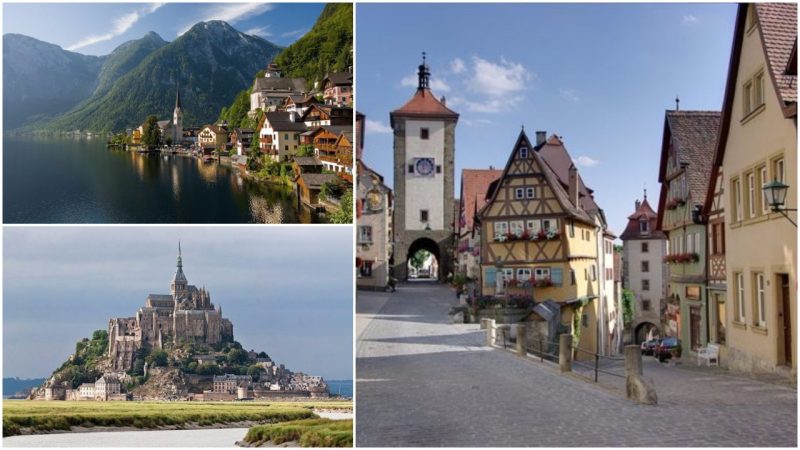Europe was a bustling place in medieval times. Today, across Europe, besides the upheavals and world wars, some cities have retained their medieval charm and architectural features.
Here are some preserved places to visit across Europe:
25. Edinburgh, the Scottish capital since the 15th century
This city has two parts – the Old Town with its medieval fortress and the New town that has been developed since the 18th century. The two different areas give a unique character to the city. The old town contains 16th and 17th century noble and merchant houses that worth a visit.
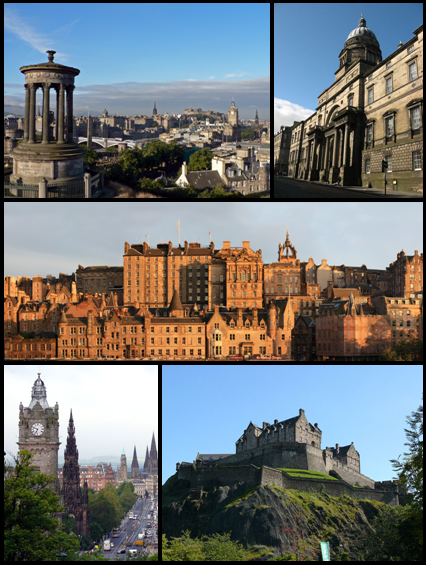
The streets are in the medieval fishbone pattern, with narrow streets and courts leading from the High Street. The new town has a concentration of neo-classical buildings combined with gardens which form private and public open spaces.
24. Eze is a medieval town built in the Alps, France
This place is considered as the only authentic medieval city in the Alps. The area has been inhabited since 2000 BC; it was occupied by both the Romans and the Moors.

The oldest building is the Chapelle de la Sainte Croix from 1306. Eze is a “museum village” as its main income comes from tourism
23. Rothenburg ob der Tauber, Germany
Rothenburg is a well-preserved medieval town in the Franconia region, Bavaria in Germany.
The name means “Red fortress above the Tauber” due to the town’s position above the Tauber River and that the roofs are traditionally red.
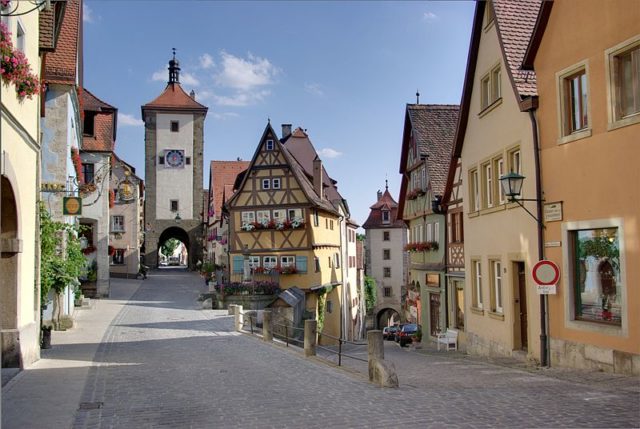
The city’s rich history shows the many medieval features that can be seen today. The weir system that you can see in the Rothenburg castle gardens was constructed in 950 by the Count of Comburg-Rothenburg. The city itself was founded in 1170 when Staufer Castle was built, but unfortunately, it was destroyed in 1356 in an earthquake. Its St. Blaise chapel is all that has remained.
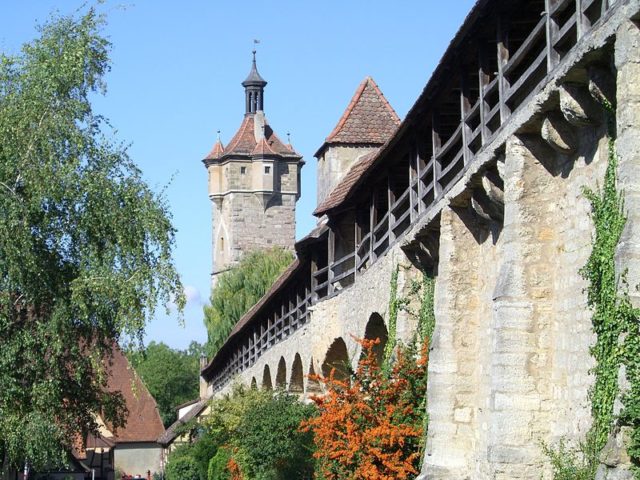
The city itself has appeared in many fantasy movies such as Chitty Chitty Bang Bang and some of the Harry Potter series. The town has a Criminal Museum which displays all the punishment and torture devices used in medieval Europe. The ancient city wall still stands, surrounding the entire city. The buildings inside this wall reflect the town’s medieval character.
22. Mont Saint Michel, a tiny town sitting on a rock formation off France’s northern coastline
Once a place of Christian pilgrimage, Mont Saint Michel was supposedly built at the request of the Archangel Michael. As a home of a great abbey, it has attracted thousands of pilgrims over the years.
The Abbey was also a place of learning, attracting not only some of the best minds in Europe but also some of the best manuscript illuminators.
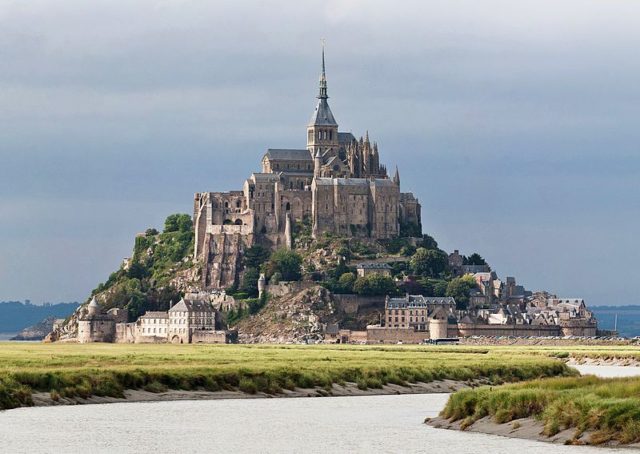
Initially, the island city could be reached only at low tide, but a causeway has been created and made the city more accessible. Car parking can be found at a considerable distance to help to preserve the city, but buses run daily, or you can get a ride in a horse-drawn carriage. Most of the medieval buildings have been converted and include a hotel, shops, and restaurants.
21. Prague, Czech Republic
For a long time, Prague has been a cultural, political, and economic center in Europe. It was founded in the Romanesque period while it flourished during the Gothic, Renaissance, and Baroque periods.
Prague has been a capital city and served as a home to many Holy Roman Emperors.

It has had a significant role in reformations and wars and was the home of many attractions that survived both World Wars. Tourist sights include the Charles Bridge, Prague Castle, the Jewish Quarter, Vysehrad, and Old Town Square. The city has over ten major museums, galleries, theaters, and cinemas. It has a convenient public transport system and one of the most visited cities in Europe. Its old architectural features include Romanesque, Rococo, Neo-Gothic, Cubist, and Baroque.
20. Siena, Italy
It is a visually Gothic city that appeared during the 12th and 15th centuries. The city was designed to be a work of art that blended into the landscape.
It was created on three hills that were connected by three streets that would form a Y shape.
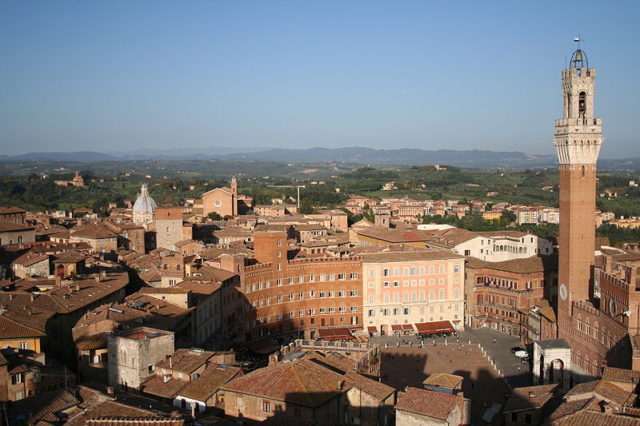
To appreciate the Gothic style that this city embodies, you need to look at the Sienese arch. Something else to see while you are here are the city’s fountains that are still being fed from the original tunnels.
19. San Gimignano, Italy
This Tuscan town was a relay point for pilgrims traveling to and from Rome. The families who controlled the town showed off their wealth by building tower houses; 14 of the 72 constructed buildings have passed the test of time.


The town has retained its feudal appearance, and it has grown around two main squares. At one point, the population declined significantly due to famine and plague in the 14th century. The declining population was the reason why the town stands so well today, as it never suffered from any urban renewal after the Middle Ages.
18. Carcassonne, France
Carcassonne is an example of a medieval fortified town, with massive defenses that circle the surrounding buildings and the castle.
The site has been occupied since the pre-Roman era, initially as a fortified settlement. Its walls are covered in towers, and you can walk along them and view the city.
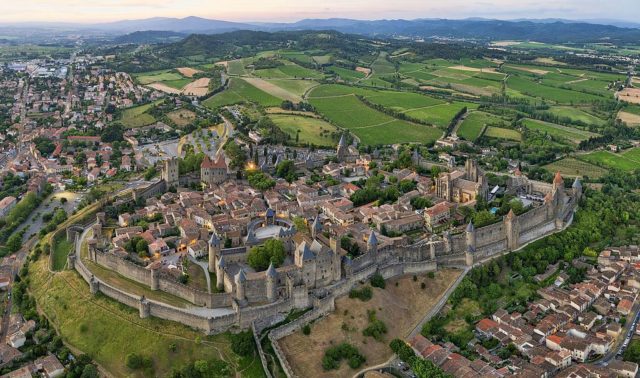
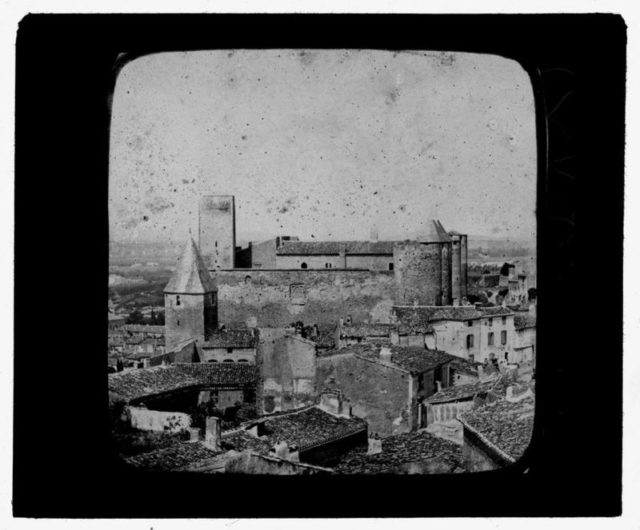
The city has a very well-maintained Gothic cathedral that has been restored and maintained over the centuries.
17. York, England
York is a walled city in North Yorkshire, England, sitting where the rivers Ouse and Foss meet.
Founded by Romans in 71 AD, it has grown over the centuries, first as a wool trading center, and later as the home to Guy Fawkes.

The city is lined with narrow roads that are traffic-free, and it is thought that one of them was the inspiration for the Diagon Alley in the Harry Potter books. York has been the home of many cultures, and both the Roman and Viking cultures can be seen today in buildings, walls, and gates.
16. Colmar, France
Founded back in the 9th century, it is a quaint city of half-timbered houses and canals. In the city center, there are many buildings from different historical periods. Other notable places to visit are the churches, the Unterlinden Museum, and the Oeuvre Notre-Dame Art Museum.

It is a major wine-producing district; even in the Middle Ages, it was sending its port all across Europe.
15. Saint Paul de Vence, France
It is one of the oldest ancient towns situated on the French Riviera. The city has medieval walls that encircle its streets. There are eleven important sites to be seen in the city.
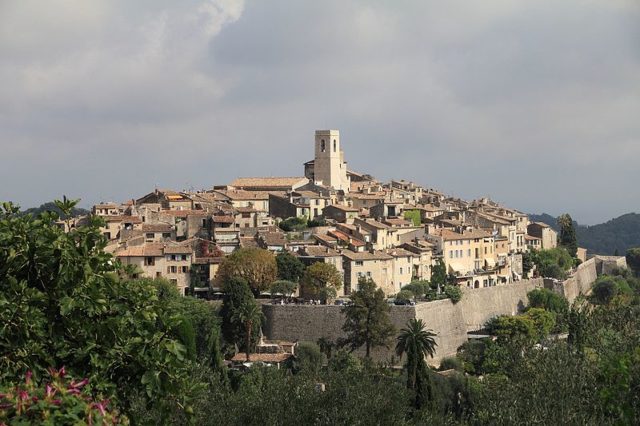
The keep, which is from the 13th century, is all that is left of the Chateau, as it was slowly demolished over the 16th-17th century. An old bell that was cast back in 1443 is still standing in the tower of the chateau.
14. Monsanto, Portugal
Situated in the Northern Portuguese hills, the town was taken back from the Moors in 1165 by King Denis I.
This place is considered to be living museum as it hasn’t changed over the years. There are red-roofed cottages, tucked against and under boulders.

Some of the boulders even have doors and have been hollowed out to hold structures that fit snugly into the landscape. It is a charming and unique village.
13. Hallstatt, Austria
The area of Salzkammergut, where Hallstatt was built, has been inhabited since prehistoric times. Salt deposits were a valuable resource in this area, and salt was harvested until the 20th century.
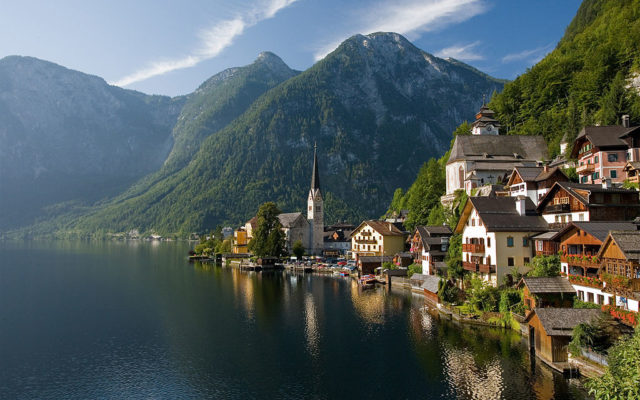
In 1750, the town of Hallstatt needed to be rebuilt after the fire had destroyed the timber buildings. It was rebuilt in a late Baroque style. The settlement has existed since the Bronze Age and is considered a rich alpine historical area.
12. Citta di San Marino, Italy
It is the capital of the Republic of San Marino. At one point it was not only the capital city but the only city, so its history resembles that of the country. It was founded by Saint Marinus and became a city for Christian refugees.

The three towers protected the city, and two of them were constructed as a response to the Crusades. The city is known for its winding cobblestone streets and the lack of cars in the city center.
11. Sighisoara, Romania
Vlad the Impaler was born in his home in Sighisoara before his family had moved away.
Vlad’s next home and the place where he ruled can be visited near the Targoviste Castle.
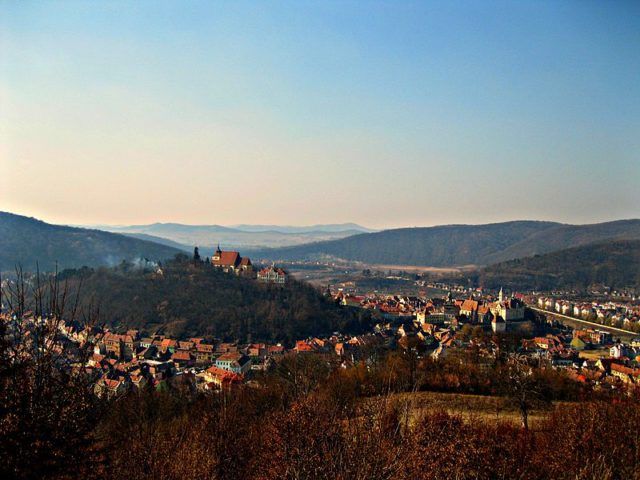
The town was founded by German craftsmen who were then called the “Saxons of Transylvania.” It was a small but heavily fortified town that played an important defensive role due to its strategic location in central Europe.
10. Cinque Terre, Italy
Located on the Ligurian coast, Cinque Terre is a village that has passed the test of time.
Built on an uneven and steep terrain, the village is a range of beautifully colored buildings that add to the area’s charm.

This is a medieval town which has fortifications that were added back in the Middle Ages and helped in the protection of the populace from pirate attacks. This area of coastline has been occupied for thousands of years.
9. Imperial Castle in the medieval town of Cochem, Germany
The original Castle was destroyed in 1689 by King Louis XIV and then rebuilt 180 years later by a German businessman. Instead of being faithfully recreated, it was redesigned in a Neo-Gothic style. Some of the original Gothic and Romanesque features were retained, as in the Octagonal Tower.

The site has a long and fascinating history, and you can tour its location. Nearby is Berg Eltz, which is hidden away in a valley and considered as one of the greatest castles in Europe.
8. Chester, England
The town of Chester, which began as a Roman outpost, is situated in the northwest ofEngland. Over time it grew into a regional power.
The town has the quaint black and white half-timber houses, which are a common sight in Germany.

The Duke of Westminster owns a large part of Chester and has worked hard to make sure that the medieval and Roman features are maintained. You can walk along the ancient city walls and through the gates that have been restored.
7. Vitre, France
Located in Brittany, France, this town used to be very important. It has a 16th-century strange town look and a fairytale castle that will delight you. The castle houses a museum which is open to tourists.
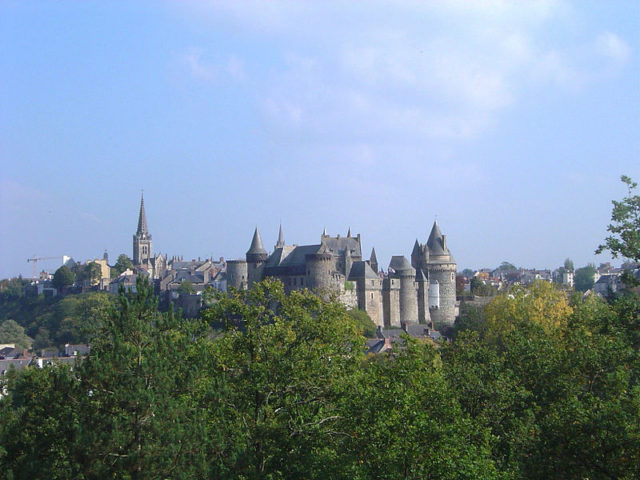
The town itself has the lovely half-timbered houses that were built by merchants. Outside the walls, there are stone cottages that have been constructed on the slopes.
6. Nottingham, England
Not only that this town is connected to the legends of Robin Hood, but it is also known for its lace making.
The city has been around before the invasion of the Anglo-Saxons. The castle was built in 1068 on the River Leen. The original site of the settlement can be found on the place of today’s lace market.
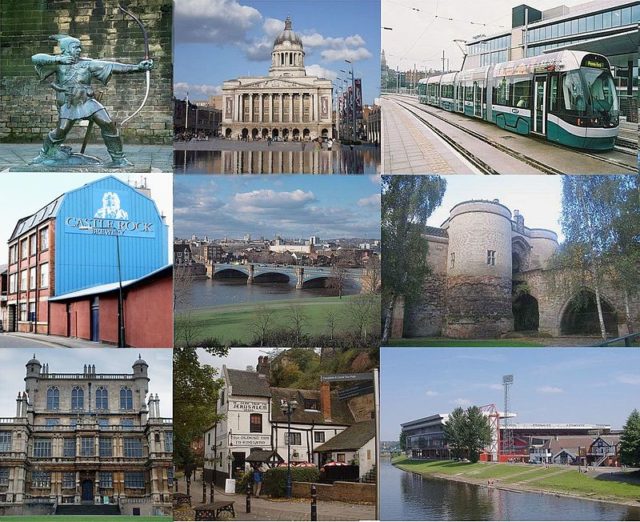
The Castle was once occupied by the people who supported Prince John, including the Sheriff of Nottingham. Off to the north is Sherwood Forest, which is a royal forest often mentioned in the tales of Robin Hood.
5. Heiligenbrunn, Austria
The houses that resemble stunningly white-plastered square boxes with thick thatched roofs make this sparsely-populated town to be a virtually living museum.
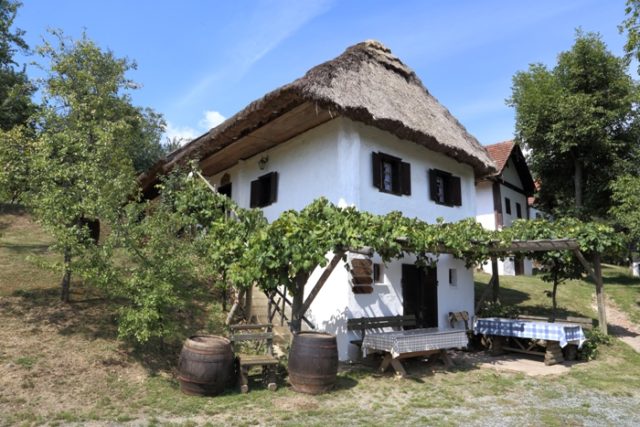
This village has no castles or fortifications. It is, however, known for its wine, which was once banned for being too strong.
4. Avila, Spain
Created in the 11th century to protect the Spanish from the Moors, this place has an impressive city wall that has nine gates and 82 semicircular towers.

The wall dates back to 1090, and it is 3 meters thick and still fully intact. Inside the city, there is a Gothic cathedral, Romanesque churches, and convents. To get into the city, you need to enter through one of the nine gates.
3. The island of Rhodes
Rhodes was part of the Roman Empire in 164 BC, so there is a strong Roman influence in the city architecture.

The Knights added cathedrals and improved the city wall. Eventually, this wasn’t enough for defense, and it fell to the Ottomans in 1522.
Therefore, mosques and features of Arabic culture were added to the city. In the Lower City, you can see Gothic architecture and architecture from the Ottoman Era.
2. Bamberg, Germany
In this city, people had built the town hall in the middle of the river and then built bridges to connect it to the rest of the city.
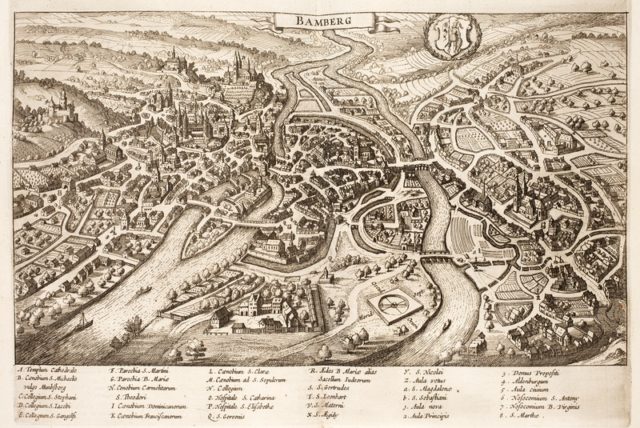
This town is known for its beer. It has nine historic breweries and many taverns from the same era.
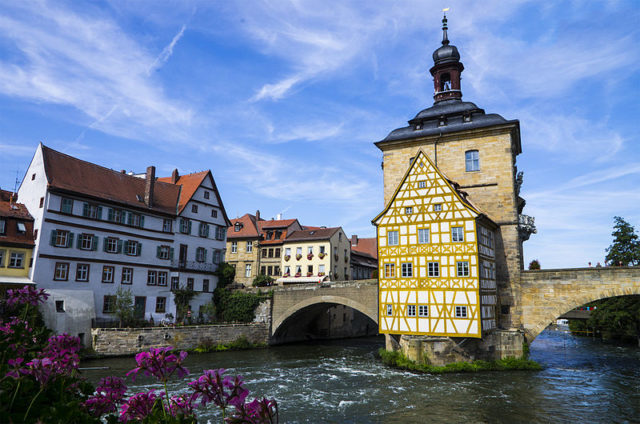
Back in the Middle Ages, the city was a fisherman’s settlement, BigBoyTravel.com reported.
1. Nuremberg, Germany
Before World War II, this city was one of the most beautiful in Europe. After the many destructions caused by the war, the city was rebuilt.
Kaiserburg Castle is one of its many attractions.
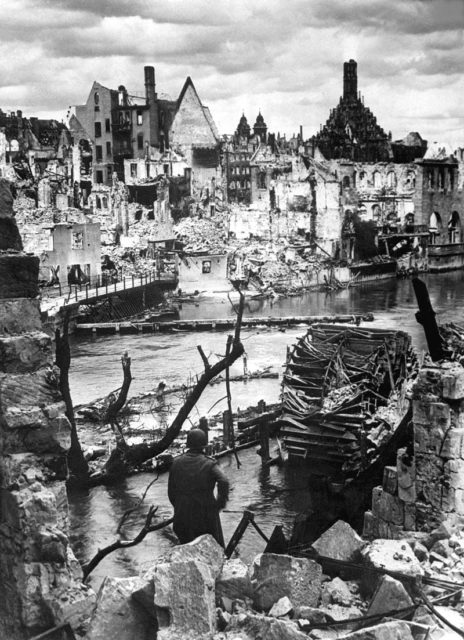


Many areas in the castle have been restored. In the city, there are organized tours of the medieval dungeons that were built in the 1300s, as well as of other historic areas that speak of the history of this old city.
